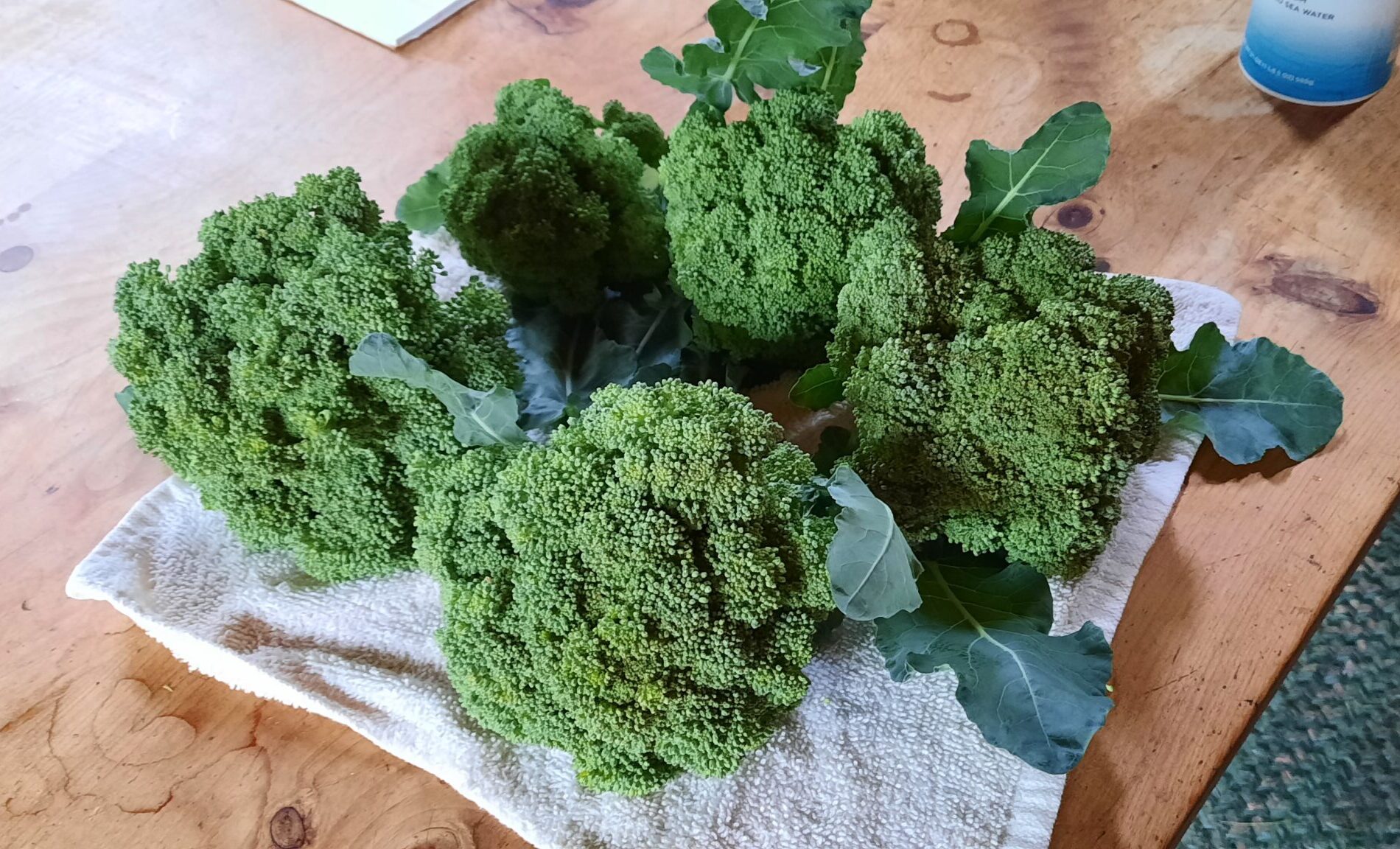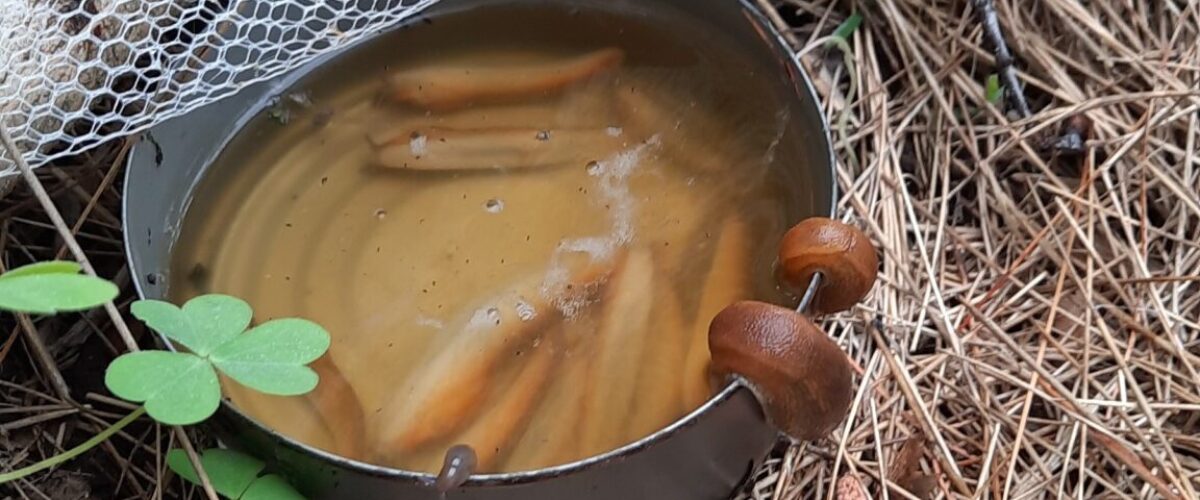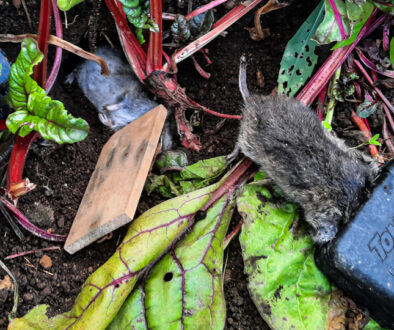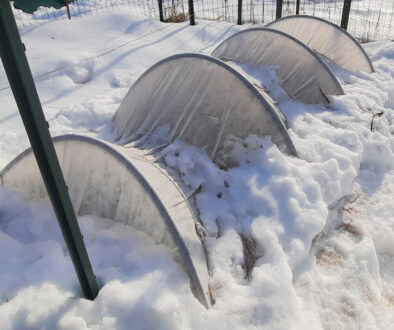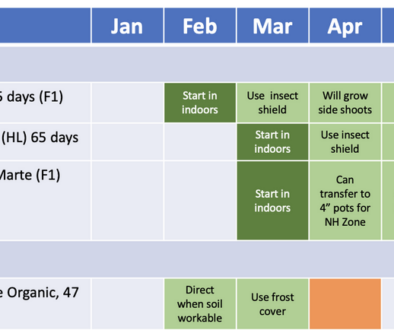So I went to good ol’ YouTube for advice. and everyone was saying beer. My first attempt was to use the craft IPA I hadn’t finished which has minimal results. The amateur criticism I received was that IPA was too hoppy, and, perhaps the creeping slime balls didn’t like the fine taste of a bitter brew.
Next, I went out and got the cheapest beer available at Market Basket, Pabst Blue Ribbon, $6.99 a six-pack.
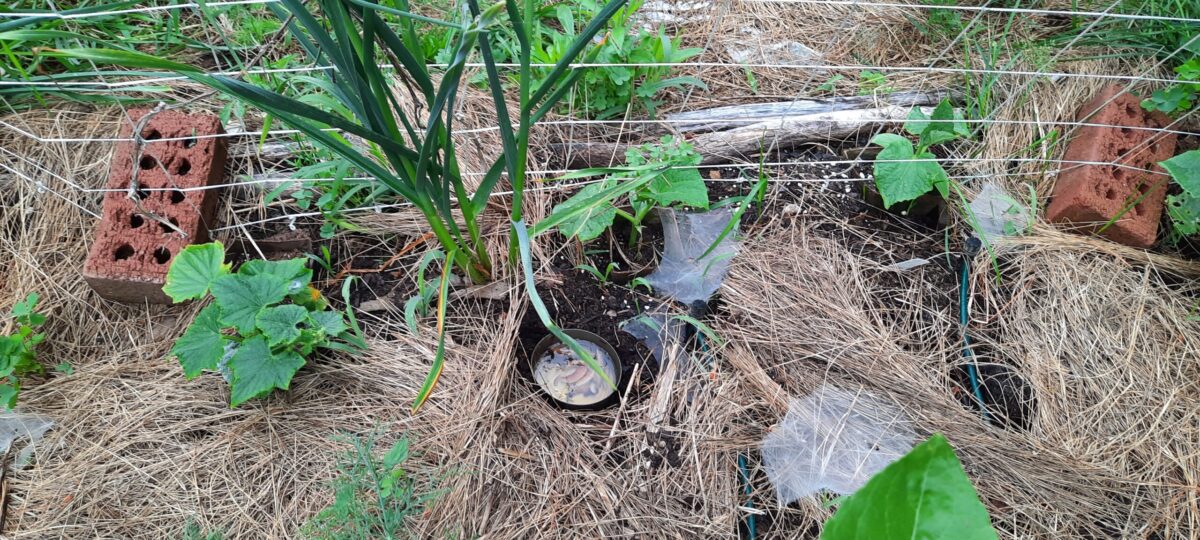
After emptying a six-pack of Pabst into as many little containers as I could find I had mixed results. The tuna cans worked the best. The small aluminum pie plates didn’t work at all. (I guess the slugs don’t like crossing crinkled aluminum.)
Styrofoam bowls worked well, though not very organic, placed on the mounds of young squash plants. Slugs seemed to like the flowers more than the leaves of squash. The fact that I mulched with straw and empty bags of manure didn’t help keep down the slug population. They like to hide in the mulch by day and creep out at night.
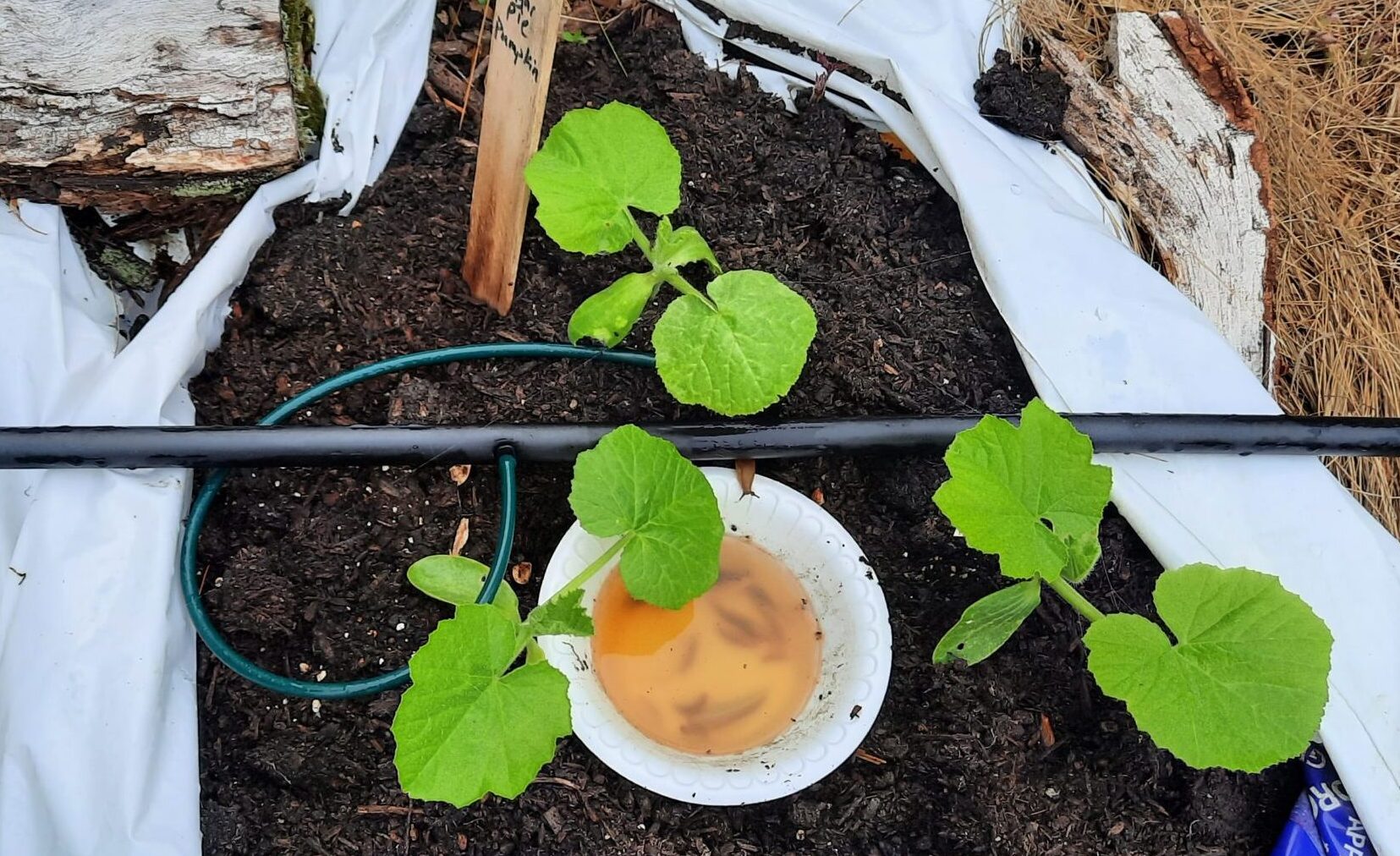
After setting out the traps in the evening, I checked the next day and realized that I had an infestation – about 10 to 15 nasty dead slugs per trap. According to YouTube, some of the slugs carry a disease that will spread and kill off other slugs, so you’re supposed to deposit the dead slugs back into the garden.
More traps
Unfortunately, the rains came and diluted the little tuna cans. I then needed to go to plan B. I covered many of the traps with an empty flower pot. Then the heat came. This created a slug custard out of the beer and trapped mollusks. Pretty disgusting, but not as disgusting as trapping out rodents.
The plastic cut-away containers also had mixed results. The half-gallon milk jugs worked well, yogurt containers did not.
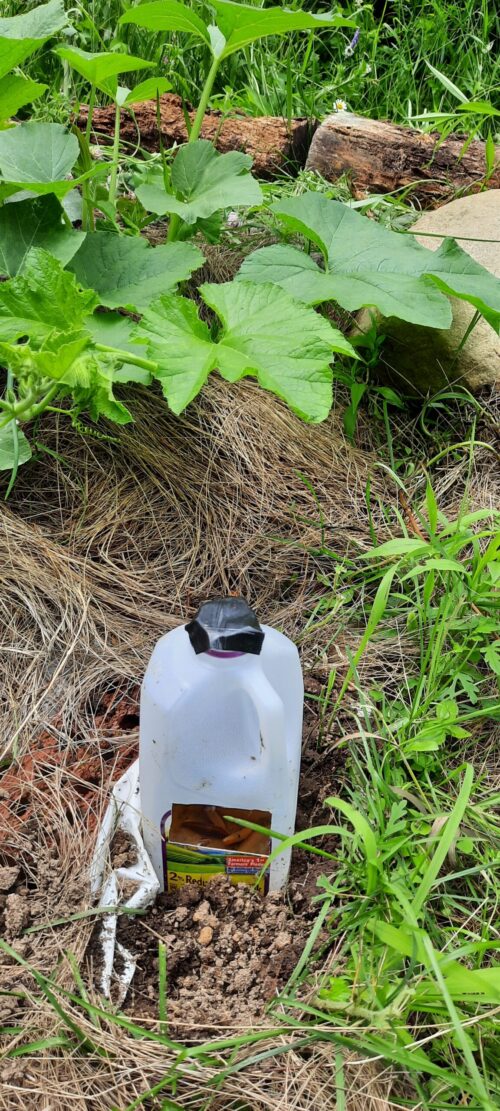
Even though I caught maybe hundreds of slugs using beer traps, it seemed that all the alcoholics were dead and the tea teetotalers were still multiplying. I had to go to extremes and get some poison, or something.
Sluggo
Searching the racks at the hardware store I found slug bait which contained EDTA (not good). I knew from long ago EDTA is a preservative to stay away from. At the local Agaway, I found Sluggo. This contained iron phosphate. (phosphates I’m not too crazy about either). Supposedly this is considered an organic slug-icide as it is found naturally in soil. It worked, though I applied it gingerly that first time. In the morning I would go around with scissors and cut the little bastards in half hence they dare to show up. I counted about a dozen or so and slowly it got reduced to one or two after a second application of the iron phosphate.
Others manufacture iron phosphate. To use you sprinkle it around the perimeter of the garden and it can also be used in the rows. Anyway, it worked and I was able to get a nice harvest of broccoli.
Copper – Nature’s Slug Repellent
These slimy critters can’t resist the electric charm of copper, making it the ultimate slug deterrent. Create copper barriers using our copper collars around your plants and prevent slugs and snails from eating away your hard work.
Copper collars
New in 2024. The copper collars seem to work well as long as the plant leaves are not touching the ground, netting, or miscellaneous weeds.
Copper collars are available in the shop. BUY NOW!
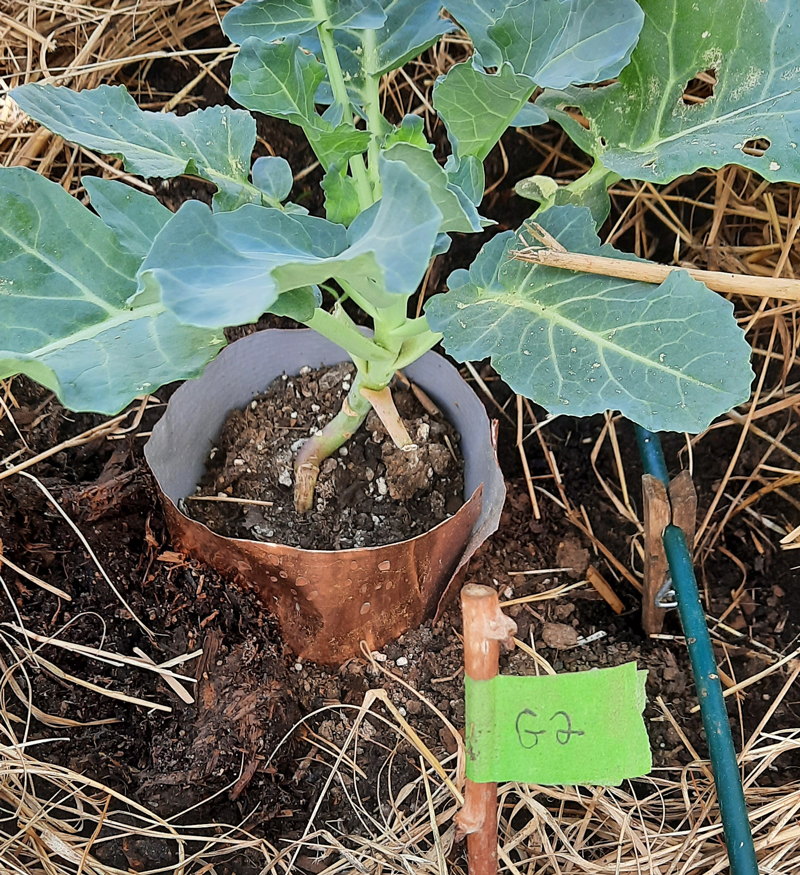
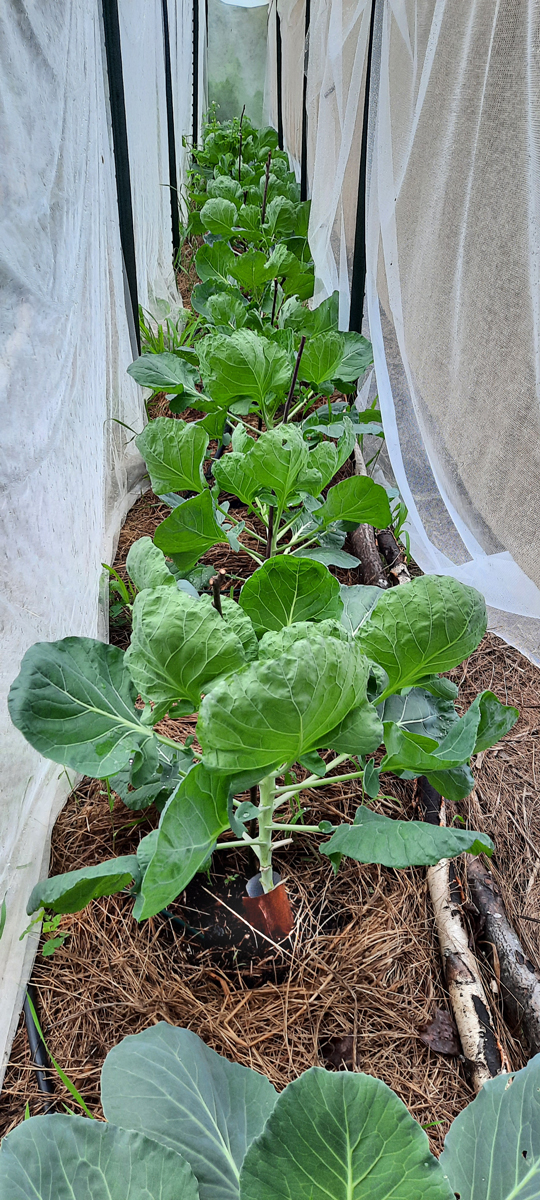
Ultimate insect and slug prevention using insect sheild for flying insects (looper worms, cabbage moths) and slugs using copper collars.
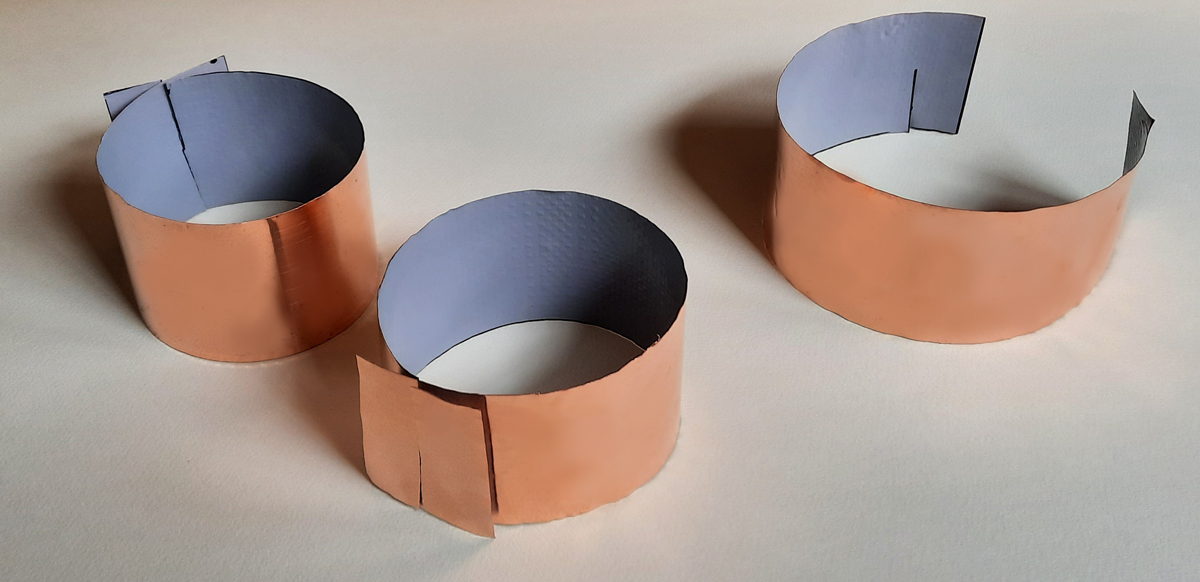
Buy copper collars here.
Slug prevention success
